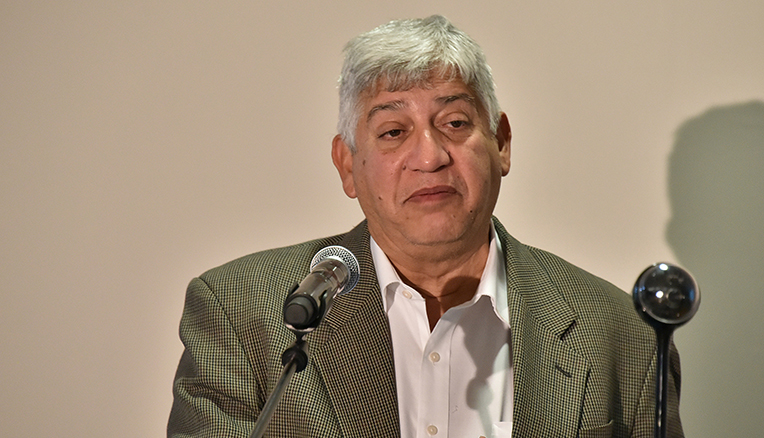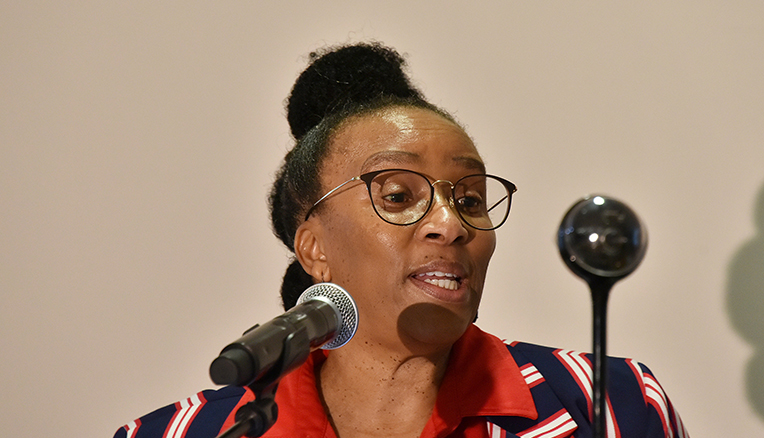The Library and Information Services of the University of the Free State (UFS) and the
Central University of Technology,Free State (CUT) jointly hosted an Open Science Colloquium on 19 November 2019. The colloquium was in response to the national and international developments in what is referred to as ‘the
Open Access 2020 (OA2020) movement’. This movement calls on all parties involved in scholarly communication to take action to make their scholarly outputs open and freely available to all citizens of the world. It is a move against the current subscription-based model of publication, which has proved to be costly and unsustainable, and which limits access to knowledge to a few, making it unacceptable.
Welcoming more than 200 delegates to the UFS, Ms Betsy Eister, Director: Library and Information Services, referred to OA2020 as a disruption in the publishing arena.
Endorsing the Berlin Declaration on Open Access to Knowledge in the Sciences and HumanitiesThe colloquium comes as an endorsement of the Berlin Declaration on Open Access to Knowledge in the Sciences and Humanities that the two universities signed eight years ago. As signatories, the UFS and CUT have committed to the wide and free dissemination of its scholarship by means of open access platforms. This declaration was confirmed by the Rector and Vice-Chancellor, Prof Francis Petersen.
“When the UFS signed the Berlin Declaration on Open Access to Knowledge in the Sciences and Humanities in 2011, this university committed itself to the wide and free dissemination of its scholarship by means of open access platforms. At that point, we have already made that commitment to open access platforms.”
Open access vs subscriptionProf Petersen said challenging the current status quo will bring equity into the system, which will “ensure that our younger cohort of researchers and scholars have the ability to freely conduct research, to freely access material, so that we can produce high-quality researchers and scholars for our system”.
Also present was Prof Ahmed Bawa, Chief Executive Officer of
Universities South Africa, who echoed Prof Petersen’s message by making a case for management, researchers, libraries and research funders to work together to make OA2020 a reality. “These discussions are very important because it provides us with an opportunity to build international consensus on these things, which is critical in moving forward.”

Prof Ahmed Bawa, Chief Executive Officer of Universities South Africa addressed delegates on the importance of open access.
Mr Glenn Truran, Director of the South African Library and Information Consortium (SANLiC), and Ms Eister addressed the national and local roadmaps, respectively. SANLiC, a consortium that negotiates deals for electronic resource subscriptions on behalf of all 26 public universities and eight research councils, has already started transformative agreement negotiations with international publishing company Taylor and Francis.
The colloquium ended with a declaration signed by members present, hoping that it would be signed by all concerned as a commitment to taking action towards
open access. The two universities will ultimately sign the OA2020 Expression of Interest.
• The UFS and CUT Libraries are thankful to Mr Gareth O’Neill and UFS colleagues (Mr Charlie Molepo and Mrs Cornelle Scheltema-Van Wyk), who shared information with the attendees on transformation agreements (also referred to as Plan S) and AmeliCA, respectively. Plan S deals with transformation agreements to be signed with publishers, which are about negotiations with publishers to change from subscription-based to open-access journal publishing models. Mr Molepo and Mrs Scheltema-Van Wyk showcased the open access model that the UFS Library has already implemented, which is what AmeliCA is all about. This involves the publication of nine accredited UFS journals on the Open Journals System platform, which enhance its discoverability and accessibility. It was also a pleasure to listen to Prof Abdon Atangana from the UFS Institute for Groundwater Studies – a classic example of an activist and beneficiary of open access publishing – who was recently named as one of the top-10 cited researchers in the Web of Science, thanks to open access publication.

Betsy Eister, Director: Library and Information Services at the UFS.